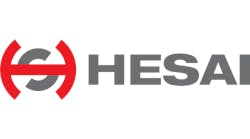Steam power brought us the first industrial revolution in 1712, the assembly line the second around 1870, and automation the third with the PLC in 1969. Today and tomorrow, we’re experiencing the fourth industrial revolution, Industrie 4.0, with proliferation of information technology and the ability to visualize the interactions of people, things and services.
“Today, we’ve connected 6.4 billion things, by 2020 it will be 20 billion. Increased connectivity offers huge potential for improvements in many areas,” said Matthias H. Erhardt, segment manager, Food & Beverage, ABB, to attendees of his session, “Data use and compliance in FDA-regulated food and beverage environments” at ABB Customer World this week in Houston.
The food and beverage industries as a group are “fairly far behind from a digitalization perspective,” but growth is accelerating, Erhardt said. Today, the industry is moving from paper-based systems to the cloud “extremely quickly, with the number of applications expected to triple in five years.”
Driven by compliance
“As data is passed up, its integrity must be retained, and you want to take care of all the data, not just the legal requirement, to gain the advantages.” ABB’s Matthias Erhardt discussed the importance of data and compliance in the context of FDA-regulated food and beverage environments.
The food and beverage industries look simple on the outside, but a typical facility includes a labyrinth of machines, process equipment and conveyor belts enabling a flow of materials from receiving through the plant to the stores and consumers, with plenty of opportunities to make a mistake. “We want to be sure we don’t get sick,” Erhardt says. At the same time, new business models call for flexible marketing and production, for example, Coke in seasonal bottles for Christmas and Easter. “They have to be done on time, and it takes a lot to do it.”
Data digitalization helps ensure compliance, flexibility and more. Industrie 4.0 is being made possible by available IT infrastructure including the cloud, big data, cybersecurity, sensors and software. “Automation is enhanced with software simulation and robotics, so we can now simulate and optimize a production cell in a virtual environment,” Erhardt said. “The opportunity exists to improve asset utilization, labor productivity, safety, inventories and quality, as well as balancing supply with demand, raising energy efficiency and improving waste management.”
Data delivers more
The average product recall costs $10 million, but can cost much more. In recent years, for example, a spinach recall cost $350 million, and a peanut butter recall $1 billion. Food poisoning causes 5,000 deaths per year and sends 300,000 people to the hospital every year, Erhardt said. “And it does lasting damage to companies, because 83% of consumers remember the brands involved in recalls, and 55-57% temporarily or permanently discontinue buying them.”
Traceability with digital records can significantly reduce those losses, yet paper-based recordkeeping persists because it’s legal, you can put a signature on it, and it’s easy. The same approach can be used to document batches, standard operating procedures (SOPs), production orders, shift records, etc. But it’s hard to search or analyze, hard to make reports or provide traceability. And you need enough climate-controlled storage space for seven years of records (10 years for adverse information).
FDA Title 21 CFR Part 11 has allowed electronic records since 1997. “It’s not a rule, but a guideline, and it’s today’s guiding principle for other standards,” Erhardt said, “and it’s only as good as the quality of the data.”
Quality data, everywhere
Digitalization is a straightforward, though sometimes complex, process that starts with rationalizing processes and defining your needs. “First, align processes and translate operational objectives into measurable success indicators,” Erhardt said. “Align operational levels and processes, and standardize workflows between work centers.”
Then go digital. A fully digitally-integrated plant will acquire data starting at raw materials and at every production step. Data from sources such as materials warehouses, automated guided vehicles (AGVs) and silos will be provided to the manufacturing execution system (MES). Data from plant-area sources such as bar code scanners, scales, control systems, picking, packaging lines and palletizing will be collected by the production system. All data is passed up to the enterprise system to use for eliminating waste, maximizing flow, empowering operators, improving ergonomics, speeding changeovers, minimizing inventory and making sure each step is done right the first time.
Ensure data integrity and security through storage, routing and processing. Define digital workflows and processes and role-based access control, and allow for digital signatures. Assign access to the data for audit trails, alarm management, historian and reporting functions, batch control, recipe management, shift information and maintenance.
Consider the potential for real-time reporting of electronic batch records, quality reports, overall equipment effectiveness (OEE) and utilization, energy management, production benchmarking and alarms.
“As data is passed up from plant-floor systems, its integrity must be retained,” Erhardt said, “And you want to take care of all the data, not just the legal requirement, to gain the advantages.”
Start at the network
Erhardt recommends food and beverage plants consider starting their digitalization initiative at the network level with a data management system such as ABB zenon. “Start with one machine, and expand machine-by-machine by bringing each one up to the network,” he said. Then add additional equipment and areas.
ABB zenon offers scalability and the necessary capabilities to ensure data integrity. It has hardware drivers, fieldbus and other connectivity to bring in diverse equipment, and communicates up to SAP, Microsoft Dynamics, process gateways, SQL, OPC-UA and more. Security features are integrated, and it can be used across the plant utilities and building systems as well as production, packaging and warehouse applications.
“Once you have the data, you can do a lot with it,” Erhardt said. Complete visibility and control gives you the opportunity to improve the process, empower intelligent decisions in real time, and optimize production efficiency and performance.
“Today, regulatory food safety compliance is too often documented through manual and heterogeneous processes,” Erhardt said. Costly, time-consuming and error-prone reporting may cause confusion, and access to archives and data storage is difficult. As a result, it’s often seen as an impediment to profitability. “It’s a manual process—you don’t know where you are on productivity, and you don’t where you are on quality,” he added.
“Instead, we want regulations to support standardized quality measures for production processes,” Erhardt said. Digitalized processes generate data that can be used to report KPIs in real time, with ubiquitous access to information. This allows transparency, which is the base for better business decisions, lower cost of poor quality [CoPQ] and performance flexibility.
“ABB provides all the software required to implement a digitalized production strategy, as well as the ability to collaborate on it,” Erhardt concluded. “Let’s make your today’s weaknesses your tomorrow’s strengths, together.”




